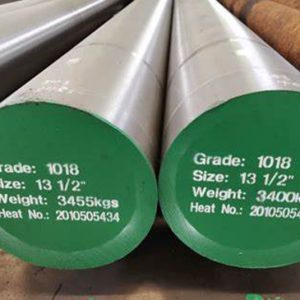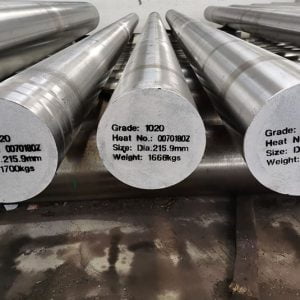Introduction
Selecting the appropriate special steel profiles for your project is a crucial decision that impacts the structural integrity, durability, and overall success of your construction or manufacturing endeavors. Special steel profiles, which include a variety of shapes and sizes tailored to specific applications, offer unique advantages in terms of strength, versatility, and performance. This comprehensive guide will help you understand the different types of special steel profiles, their applications, and the factors to consider when making your choice. Whether you are involved in construction, automotive manufacturing, or industrial machinery, this guide will provide valuable insights to help you make an informed decision.
Understanding Special Steel Profiles

What Are Special Steel Profiles?
Special steel profiles are custom-engineered steel components designed to meet specific requirements in various industries. Unlike standard steel sections, these profiles are manufactured to precise dimensions and shapes, offering tailored solutions for unique applications. Common types of special steel profiles include T-sections, L-sections, U-sections, Z-sections, and custom geometric shapes.
Advantages of Special Steel Profiles
- Customizability: Tailored to meet specific project requirements, ensuring optimal performance.
- Strength and Durability: Enhanced mechanical properties for high-stress applications.
- Efficiency: Reduced material waste and improved assembly efficiency.
- Versatility: Suitable for a wide range of applications across different industries.
- Cost-Effectiveness: Potential for cost savings through material optimization and reduced fabrication time.
Key Factors to Consider When Choosing Special Steel Profiles
1. Project Requirements
Evaluate the specific needs of your project, including load-bearing capacity, environmental conditions, and aesthetic requirements. Understanding these factors will help you choose the appropriate steel profile that meets both functional and design specifications.
2. Material Properties
Different types of steel offer varying properties in terms of strength, ductility, corrosion resistance, and machinability. Common materials for special steel profiles include carbon steel, alloy steel, stainless steel, and tool steel. Each material has its advantages and is suited for specific applications.
3. Profile Shape and Dimensions
The shape and dimensions of the steel profile should align with the structural and functional requirements of your project. Custom profiles can be designed to fit exact specifications, ensuring optimal performance and compatibility with other components.
4. Manufacturing Process
Consider the manufacturing process used to produce the special steel profiles. Common methods include hot rolling, cold rolling, extrusion, and machining. Each process has its benefits and limitations, impacting factors such as precision, surface finish, and production cost.
5. Cost and Budget
Evaluate the cost implications of different steel profiles, including material costs, manufacturing expenses, and potential savings from reduced fabrication time and material waste. Balancing quality and cost is essential to ensure the overall efficiency and success of your project.
Comparison of Common Special Steel Profiles
To help you understand the differences between various special steel profiles, the table below provides a comparative analysis of some common types used in construction and manufacturing.
| Profile Type | Material | Typical Applications | Key Features | Advantages |
|---|---|---|---|---|
| T-Section | Carbon Steel | Structural beams, supports | High strength, rigidity | Efficient load distribution |
| L-Section | Stainless Steel | Frames, brackets, reinforcements | Corrosion resistance, stability | Easy to assemble, durable |
| U-Section | Alloy Steel | Channels, tracks, rail systems | Versatile, high wear resistance | Easy integration, strong |
| Z-Section | Carbon Steel | Purlins, roofing, cladding | Lightweight, structural support | Cost-effective, easy to install |
| Custom Shape | Various Steels | Specialized machinery, automotive | Tailored to specific needs | Optimized performance, precision |
Detailed Breakdown of Profiles
T-Section
- Material: Carbon Steel
- Applications: Used in structural beams and supports for buildings and bridges due to its high strength and rigidity.
- Key Features: Efficient load distribution, making it suitable for heavy-duty applications.
- Advantages: Provides strong and stable support, minimizing the risk of structural failure.
L-Section
- Material: Stainless Steel
- Applications: Ideal for frames, brackets, and reinforcements in various structures.
- Key Features: Excellent corrosion resistance and stability, particularly in harsh environments.
- Advantages: Durable and easy to assemble, offering long-term reliability and minimal maintenance.
U-Section
- Material: Alloy Steel
- Applications: Commonly used in channels, tracks, and rail systems for industrial and automotive applications.
- Key Features: Versatile and high wear resistance, ensuring longevity and performance under high-stress conditions.
- Advantages: Easy to integrate into existing systems, providing robust and reliable support.
Z-Section
- Material: Carbon Steel
- Applications: Frequently used in purlins, roofing, and cladding systems for buildings.
- Key Features: Lightweight and provides structural support, making it ideal for roofing and siding.
- Advantages: Cost-effective and easy to install, reducing labor and material costs in construction projects.
Custom Shape
- Material: Various Steels (depending on application requirements)
- Applications: Used in specialized machinery, automotive components, and unique structural elements.
- Key Features: Tailored to meet specific design and performance criteria, ensuring precise fit and function.
- Advantages: Optimized for specific applications, offering enhanced performance and precision.
Case Studies: Successful Applications of Special Steel Profiles

Case Study 1: Construction of a High-Rise Building
Project Overview: The construction of a 50-story high-rise building in a coastal city.
Challenge: The project required steel profiles that could withstand high wind loads and resist corrosion due to the marine environment.
Solution: Custom T-sections and L-sections made of stainless steel were used for the building’s structural framework and exterior cladding. The high strength and corrosion resistance of stainless steel ensured the building’s stability and longevity.
Outcome: The use of special steel profiles resulted in a robust and durable structure, with minimal maintenance requirements and enhanced aesthetic appeal.
Case Study 2: Manufacturing of Industrial Machinery
Project Overview: Production of heavy-duty industrial machinery for a mining company.
Challenge: The machinery components needed to be extremely durable, with high wear resistance and the ability to operate under harsh conditions.
Solution: U-sections and custom-shaped profiles made of alloy steel were selected for their high strength and wear resistance. These profiles were used in the construction of conveyor systems and machinery frames.
Outcome: The machinery demonstrated exceptional performance and reliability, significantly reducing downtime and maintenance costs for the mining company.
Case Study 3: Automotive Industry Innovation
Project Overview: Development of a new line of lightweight, fuel-efficient vehicles.
Challenge: The automotive components required lightweight materials without compromising on strength and durability.
Solution: Z-sections and custom shapes made of high-strength carbon steel were utilized in the vehicle chassis and body frames. The lightweight yet strong profiles contributed to the overall reduction in vehicle weight.
Outcome: The new vehicle line achieved improved fuel efficiency and met safety standards, leading to positive market reception and increased sales.
Conclusion
Choosing the right special steel profiles for your project involves careful consideration of various factors including material properties, profile shapes, manufacturing processes, and cost implications. Special steel profiles offer significant advantages in terms of customizability, strength, and efficiency, making them ideal for a wide range of applications across different industries.
By understanding your project requirements and evaluating the different options available, you can select the most suitable special steel profiles that ensure optimal performance and cost-effectiveness. Whether you are working on a construction project, manufacturing machinery, or developing automotive components, the right choice of special steel profiles can significantly enhance the success and longevity of your project.
FAQ
What are special steel profiles?
Special steel profiles are custom-engineered steel components designed to meet specific requirements in various industries. They offer tailored solutions for unique applications, providing advantages in terms of strength, versatility, and performance.
What materials are commonly used for special steel profiles?
Common materials for special steel profiles include carbon steel, alloy steel, stainless steel, and tool steel. Each material offers different properties suited for specific applications.
How do I choose the right special steel profile for my project?
Consider factors such as your project requirements, material properties, profile shape and dimensions, manufacturing process, and budget. Understanding these aspects will help you select the appropriate steel profile that meets both functional and design specifications.
What are the advantages of using special steel profiles?
Special steel profiles offer customizability, enhanced strength and durability, efficiency, versatility, and potential cost savings through material optimization and reduced fabrication time.
Can special steel profiles be used in construction projects?
Yes, special steel profiles are widely used in construction projects for structural beams, supports, frames, and cladding systems. They provide strong and reliable support, ensuring the stability and durability of structures.
Are there any cost implications of using special steel profiles?
While the initial cost of special steel profiles may be higher due to custom manufacturing, they can offer long-term cost savings through reduced material waste, improved assembly efficiency, and lower maintenance costs.
How do manufacturing processes affect the quality of special steel profiles?
The manufacturing process impacts factors such as precision, surface finish, and production cost. Common methods include hot rolling, cold rolling, extrusion, and machining, each offering different benefits and limitations.
Can special steel profiles be tailored to specific design requirements?
Yes, special steel profiles can be custom-designed to meet specific design and performance criteria. This ensures a precise fit and function for unique applications, optimizing performance and efficiency.










